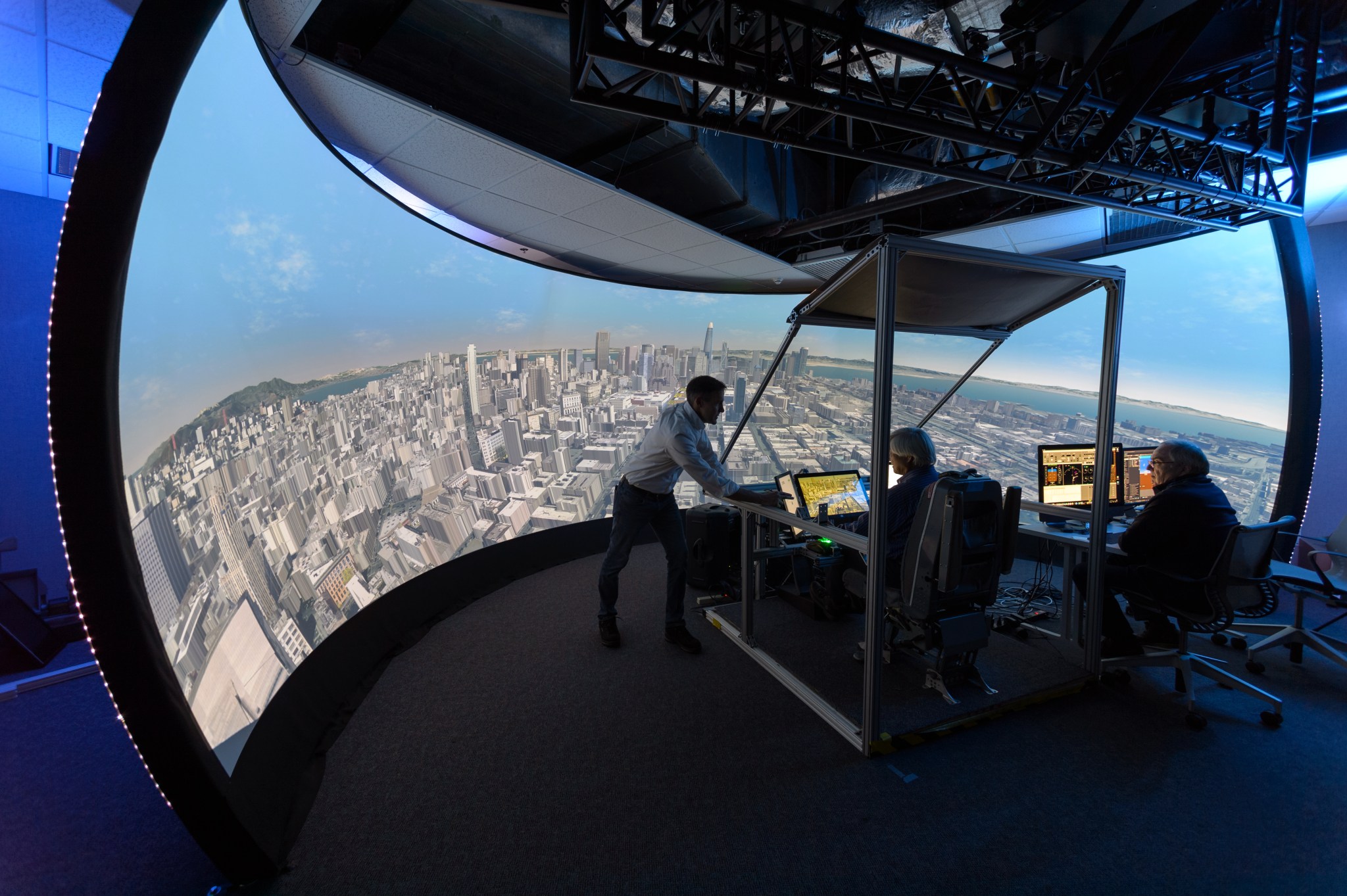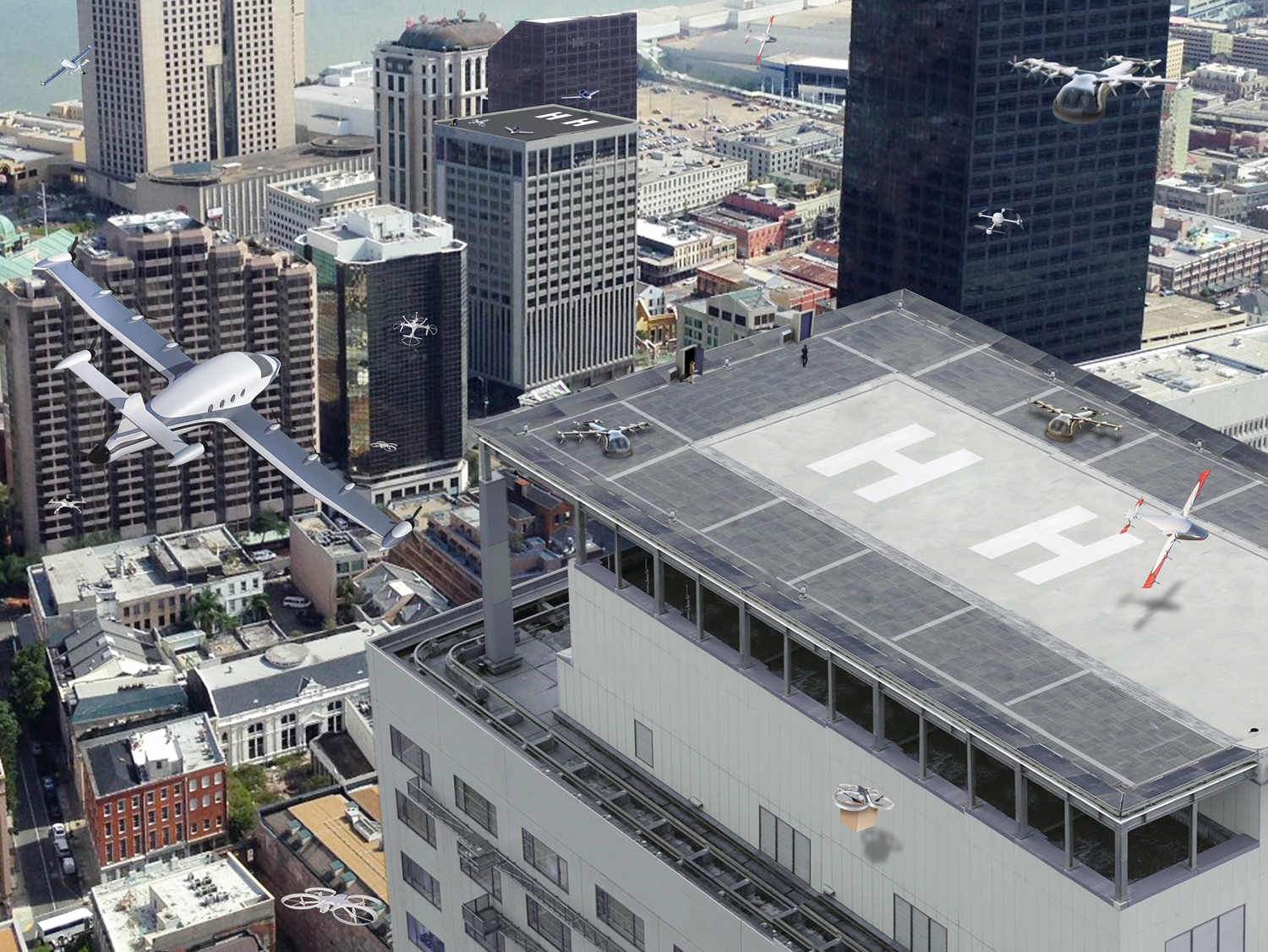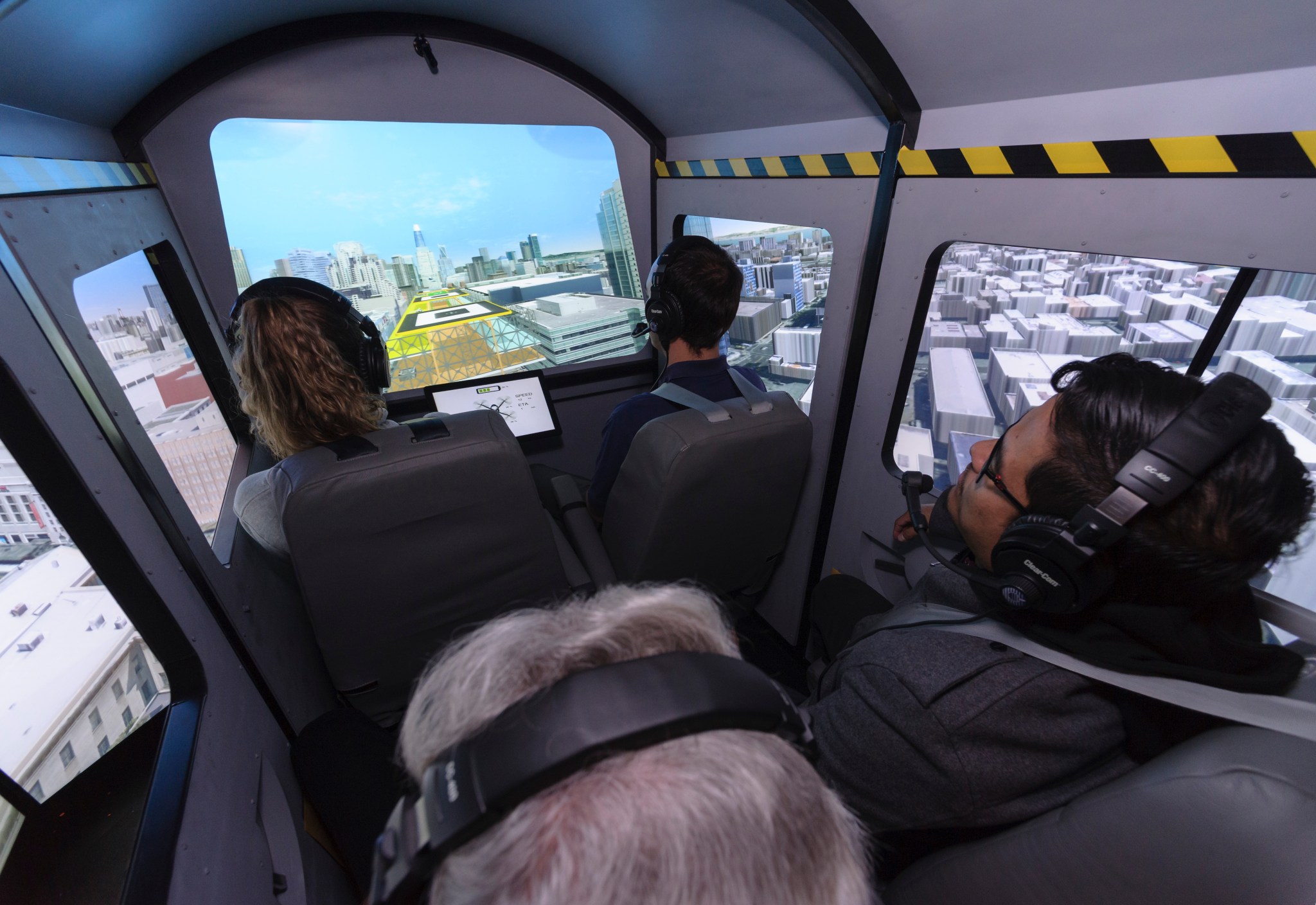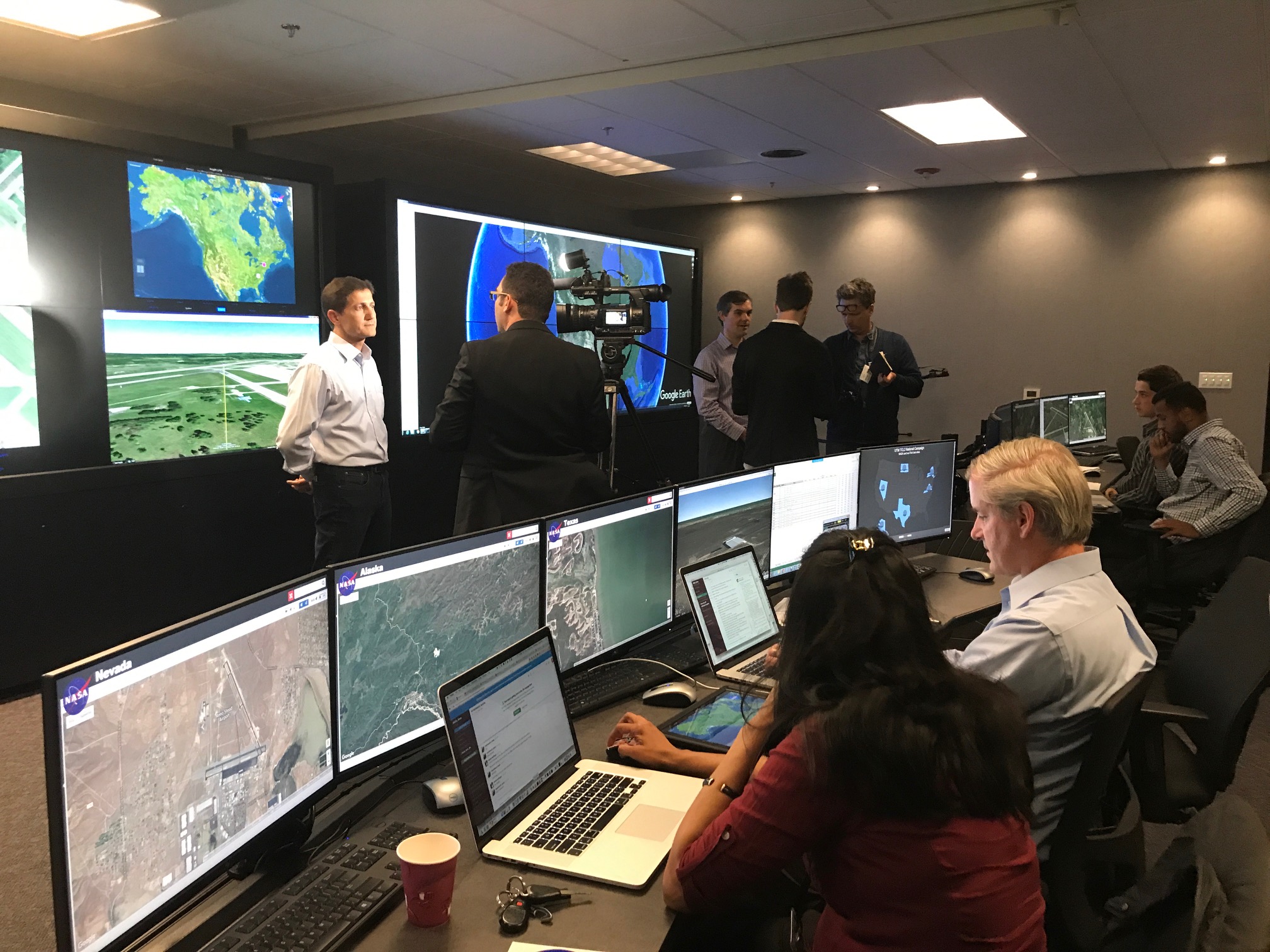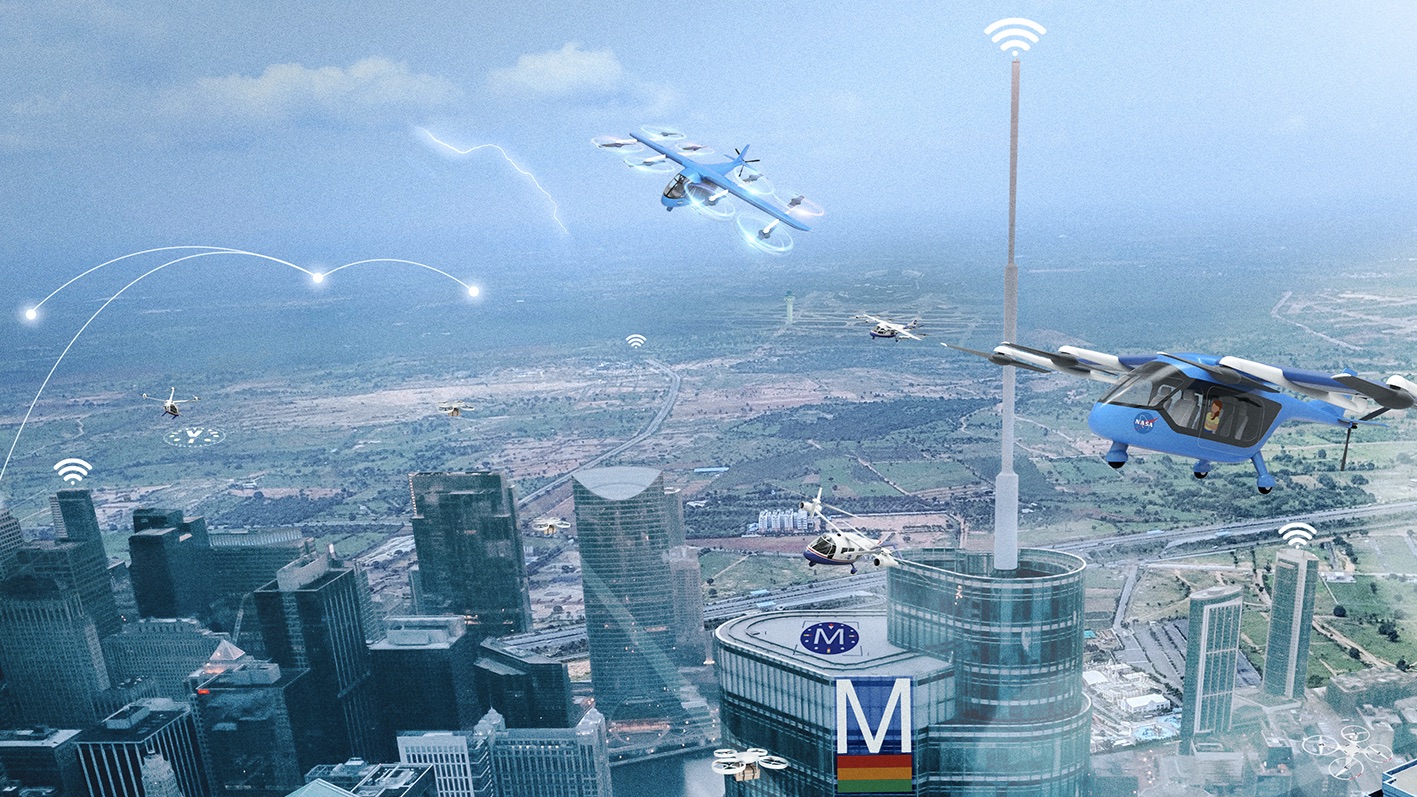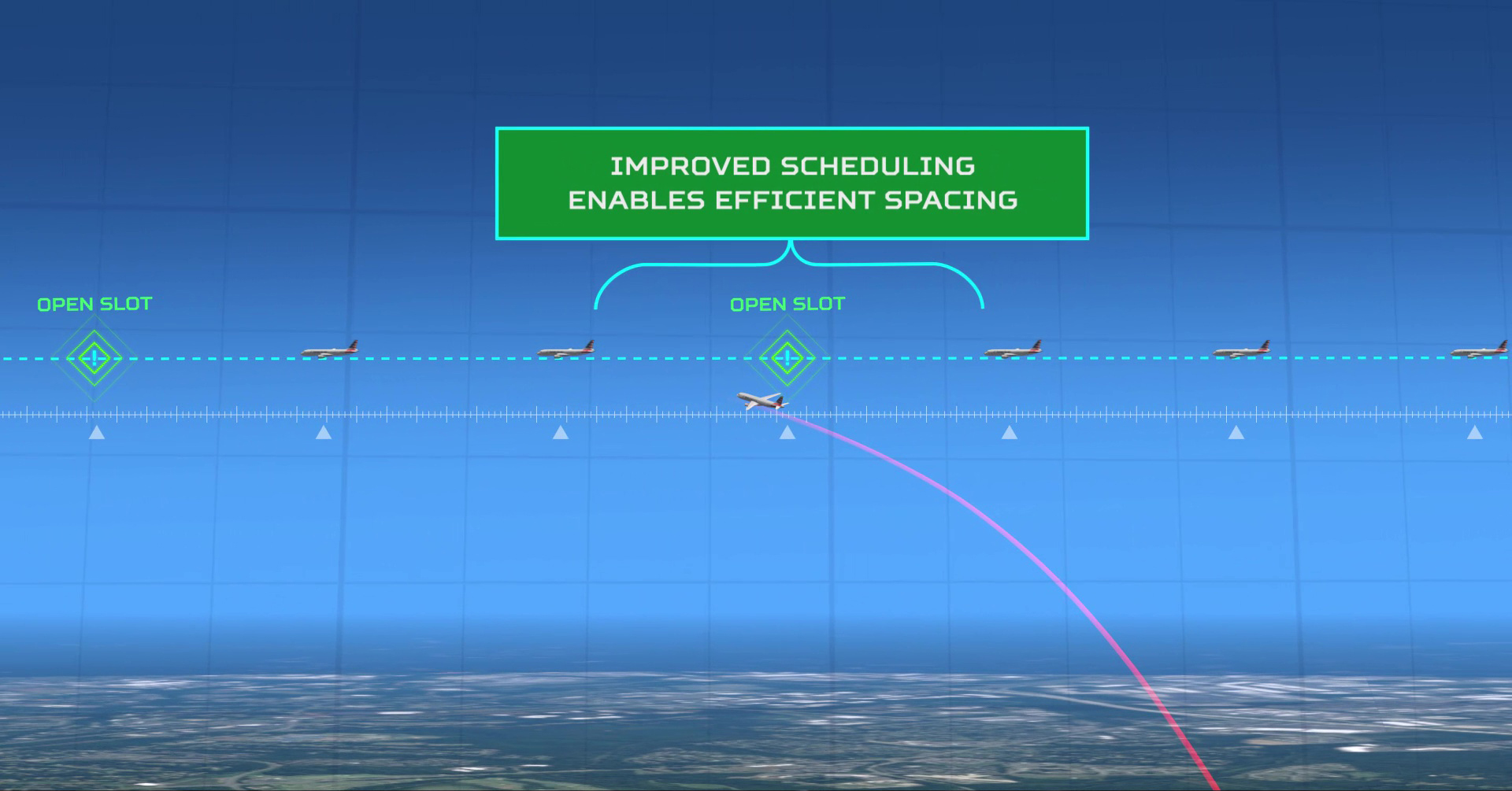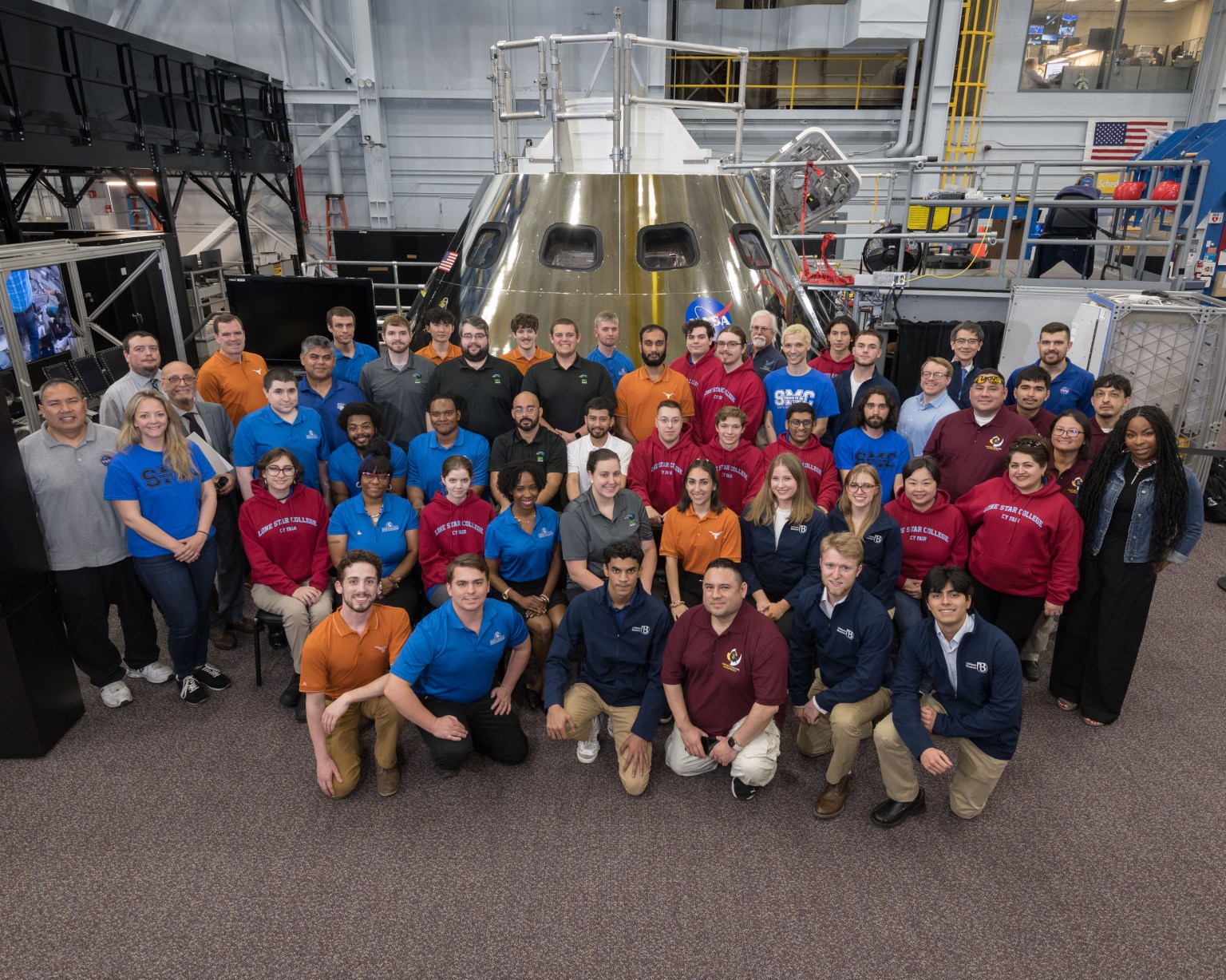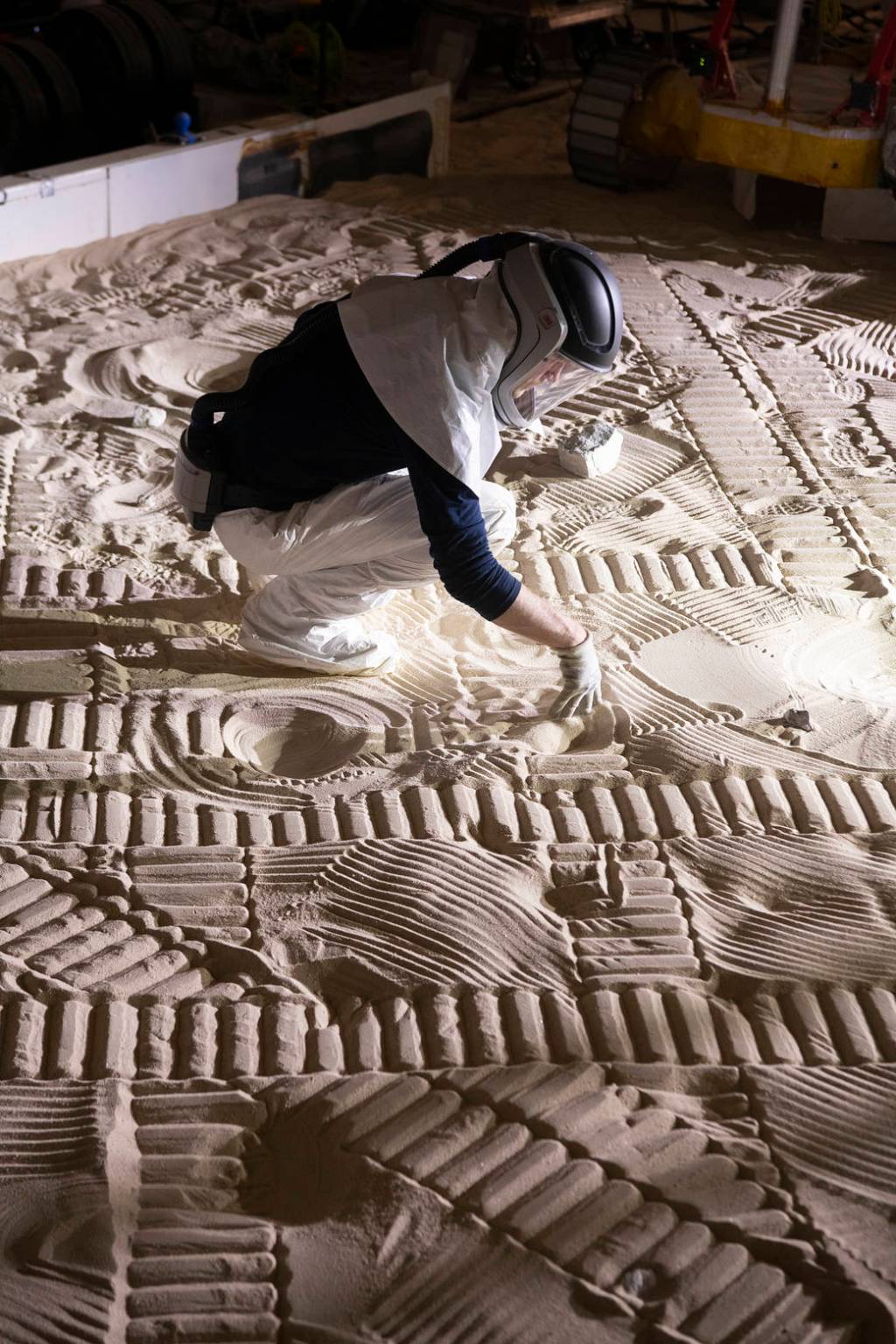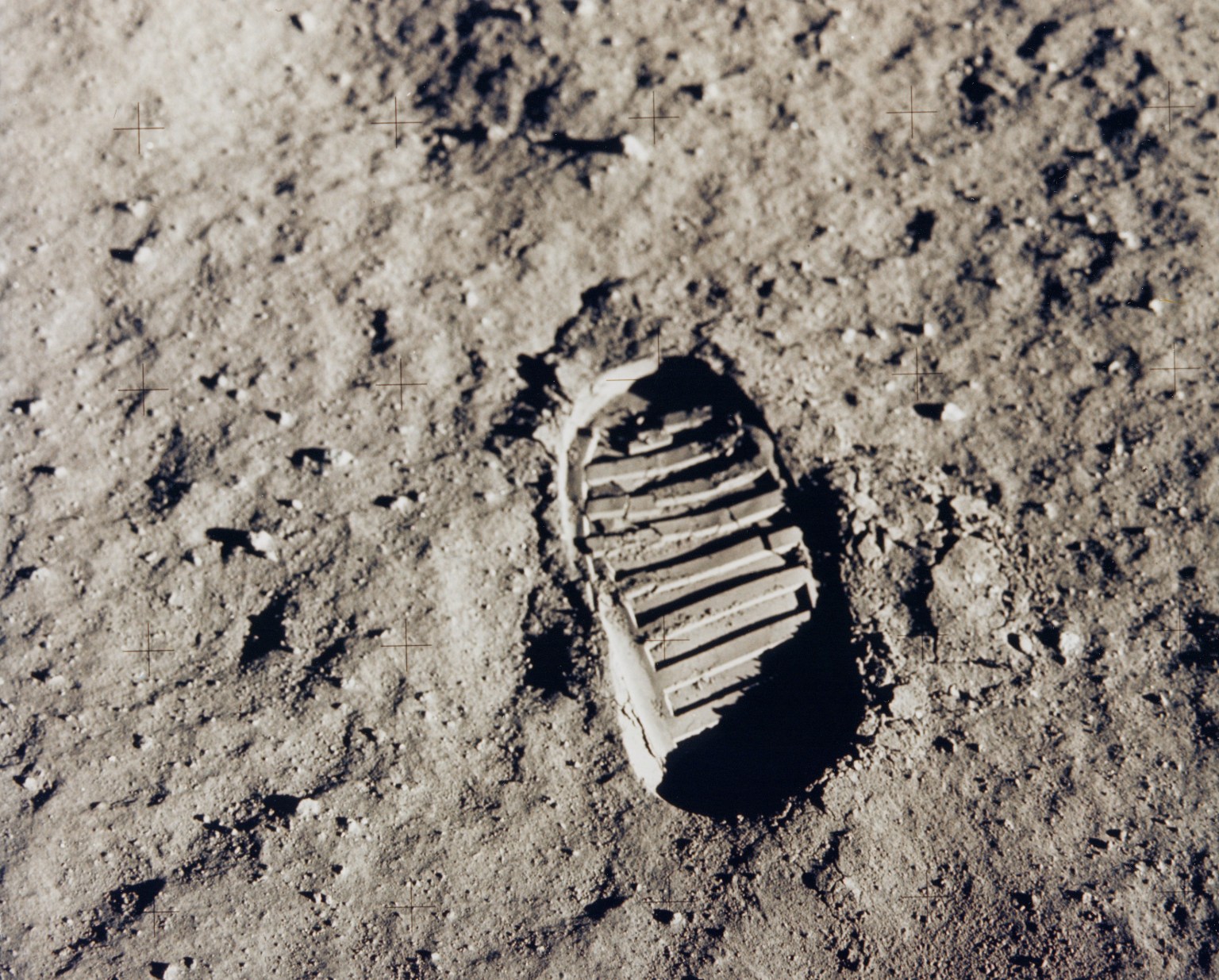About Air Traffic Management
Air traffic management, or ATM, is much like the “rules of the road” when driving, but vastly more complex. ATM is about making sure that all air vehicles in the airspace stay safely separated while also making sure the traffic is as efficient as possible. Unlike cars and other vehicles of ground transportation that drive independently under established traffic rules, commercial air transportation is more coordinated with the help of air traffic controllers and other operators. The system also must deal with delay-causing severe weather or traffic congestion. Aircraft can’t slow to a stop midair, so ATM technologies prevent and alleviate these impacts.
During peak times, there are 50,000 operations a day involving commercial aircraft in our national airspace, and thanks to advancements developed by NASA, today’s aviation industry is better equipped than ever to safely, reliably, and efficiently transport passengers and cargo to destinations around the world. In fact, every U.S. aircraft flying today, and every U.S. air traffic control facility, uses NASA-developed technology in some way.
Inside cockpits, cabins and jet engines; in traffic control facilities; and from departure gate to arrival terminal at airports everywhere, the DNA of the entire aviation industry is infused with technology that has its roots in NASA research.
Ames’ Role
Ames is one of a few NASA Centers that has been conducting aeronautics research for more than 80 years. NASA’s predecessor – the National Advisory Committee for Aeronautics (NACA) – established Ames in 1939 to help the United States make rapid technological advancements in aviation and reveal the basics of flight — aerodynamics and the way humans and technology work together to fly safely and smartly.
Thanks to Ames’ aeronautics legacy, every U.S. aircraft and U.S. air traffic control facility has NASA-developed technology on board. Ames researchers have decades of experience innovating air traffic management and performing key research with government, academic and industry partners. Their efforts to study the flow of air traffic and evaluate new concepts have shaped the tools and regulations that govern our nation’s airspace and directly benefits the flying public. Ames develops, tests and identifies the most promising capabilities in automation solutions, technologies, and procedures to help air traffic controllers safely optimize our skies.
Ames’ advanced airspace simulation and modeling expertise as well as tools for system-wide aircraft scheduling allow air traffic controllers to increase the number of aircraft that can safely move through the airspace; maximize airport capacity by generating predictable and accurate takeoff and landing schedules; reduce weather and congestion delays; and increase fuel efficiency.
These efforts have helped bring about the Next Generation Air Transportation System, or NextGen, which will transform the National Airspace System (NAS) – all the airspace, facilities, equipment, services, workforce, and procedures, that enable the nation’s air transportation system – to a safer, more reliable and efficient system. NextGen will build an integrated way to share information and provide air traffic controllers, pilots, and other airspace users more accurate, real-time information about the nation’s traffic flow, weather, and routing, and will reduce the impact of aviation on the environment, improve system performance, meet continued growth in air traffic, and increase the nation’s mobility to support economic progress.
Ames’ Facilities and Capabilities
Ames has some of the most sophisticated and strategically important facilities and capabilities in the world for developing and evaluating aeronautics technologies to meet the nation’s current and future aerospace needs.
FutureFlight Central
NASA’s FutureFlight Central (FFC) is a full-scale, fully-immersive, 360-degree, visualization facility that can represent airports, vertiports, and urban air mobility environments to test and evaluate new technologies and operating procedures.
The facility’s unique capabilities enable researchers to bring together planners, managers, controllers, pilots and airlines for real-time simulations under realistic conditions. The FFC has been used to solve traffic congestion problems at the nation’s busiest airports. For example, FFC has been configured to test airport modifications – such as expansion plans – in a safe and cost-efficient manner. In addition, planetary science projects have used the FFC’s 360-degree format as a visualization tool for robotic mission planning and evaluation of communication procedures.
Vertical Motion Simulator
The Vertical Motion Simulator (VMS) at Ames is a large flight simulator with six independent degrees of freedom in motion. The VMS motion system offers the greatest range of any ground-based flight simulator in the world, and moves as far as 60 feet vertically and 40 feet horizontally inside a ten-story tower. This unique flight simulation complex provides researchers exceptional tools to explore, define, and solve issues in both aircraft and spacecraft design. Its flexible simulation architecture, reconfigurable cockpits, and large motion envelope provides realistic sensory cues that are comparable to actual flight. Researchers have used the VMS to simulate virtually every type of aerospace vehicle, whether existing or still in the design phase, including airships, helicopters, fighter jets, spacecraft, and air taxis.
ASA/FAA North Texas Research Station (NTX)
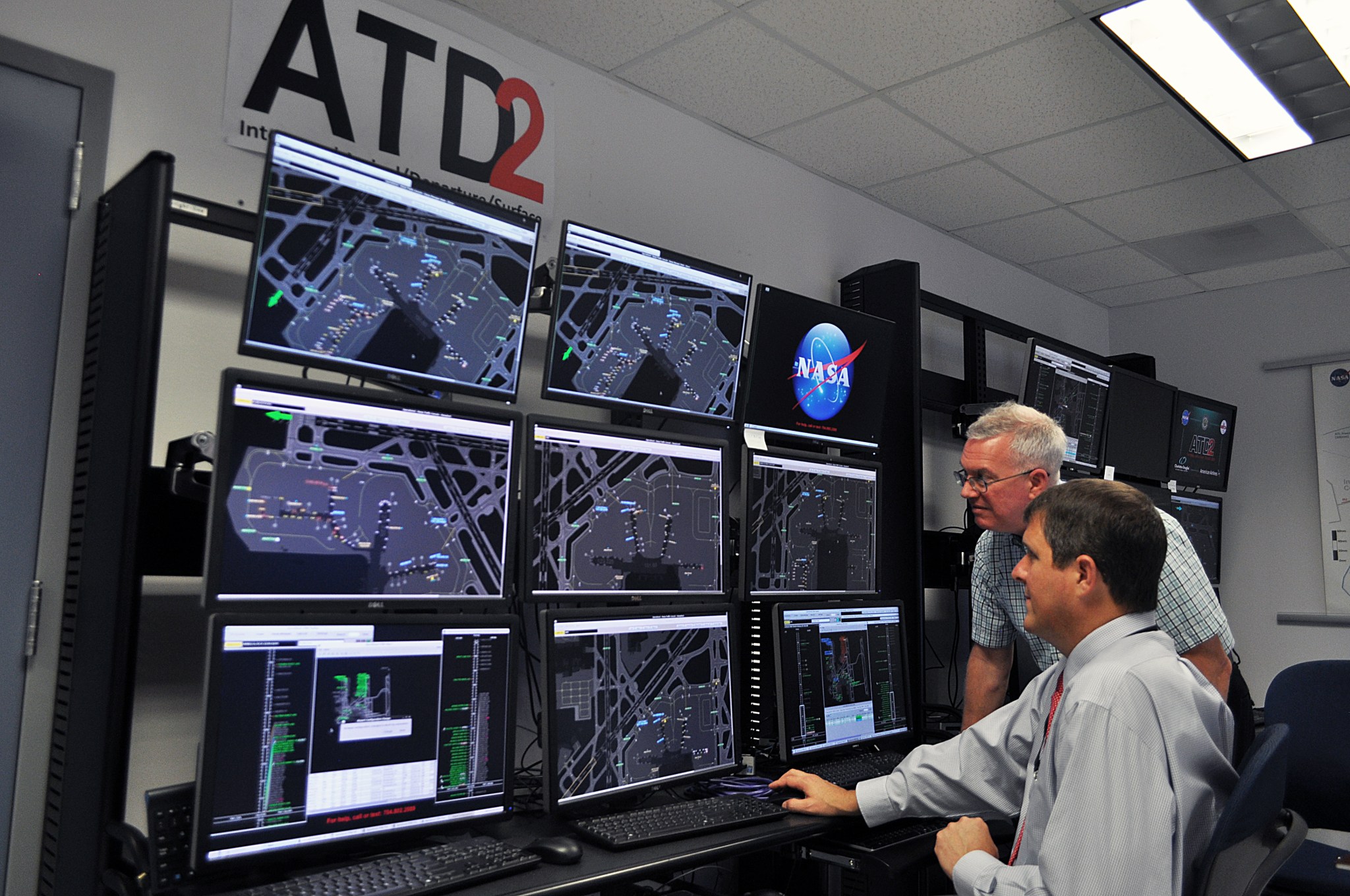
The NASA/Federal Aviation Administration (FAA) North Texas Research Station (NTX) field laboratory features a network of high-fidelity air transportation data and analysis tools embedded in a busy and complex air transportation environment. The NTX capabilities help NASA develop, evaluate, and transition advanced concepts and technologies that support NextGen. In addition, NTX represents more than 25 years of collaboration with the FAA on ATM research and technology transfer.
Air Traffic Management Simulation Laboratories
When researchers develop new ATM concepts or tools, they need a range of simulation facilities and capabilities to try out new approaches in a laboratory setting, before rolling out a new tool in real operations. These facilities, all based at Ames, include: the Sherlock Data Warehouse, which is a repository of flight, weather, and airspace data; the ATM TestBed, which generates airspace scenarios for ATM simulations; and multiple laboratories for simulations for airspace operators managing a variety of vehicles, including commercial flights and air taxis. NASA uses these facilities to develop tools to create realistic airspace traffic and conditions, using extensive air transportation databases, and provide visualization.
These facilities are used to testing includes simulations ranging from dozens to hundreds of virtual aircraft; modeling the performance of portions of airport operations to the entire air transportation system; to simulations focused on the impact of the new tools on air traffic controllers and other airspace operators.
The Airspace Operations Laboratory
Aerospace engineers, software developers and human-machine interaction experts invent together in the Airspace Operations Laboratory (AOL) at Ames. For example, using the Ames-developed innovative, automated, cloud-based Unmanned Aircraft System (UAS) Traffic Management (UTM) tool, the laboratory provides a framework to study urban airspace and operations at varying levels of autonomy. The AOL has the capabilities to interface with NASA- and industry-developed services and systems to be a central simulation and live testing facility with real-time views into UTM and Advanced Air Mobility operations at sites across the country.
Aerospace Cognitive Engineering Lab Rapid Automation Test Environment (ACELeRATE) Facility
The facility uses an immersive cockpit with realistic visual databases to enable pilots to test and modify vehicle controls and displays to optimize capabilities.
Featured Research
Unmanned Aircraft Systems Traffic Management (UTM)
For work that falls under the “three Ds” – dirty, dangerous or dull – small drones (weighing 55 pounds or less) may be the best tool for the job. There are many applications where these low-flying aircraft (400 feet and below) could save lives, time and money. Drones could inspect roads, cell phone towers, and powerlines; monitor crops or keep an eye on volcanoes; capture images of a fire or assist emergency responders with search and rescue operations; deliver goods, and more.
But because the “rules of the road” don’t yet exist for drone traffic, Ames developed the innovative, automated, cloud-based Unmanned Aircraft System (UAS) Traffic Management (UTM) tool. UTM enables uncrewed aircraft to safely join the already busy, bustling airspace and become more a part of our daily lives and economy. Experts predict more than a million commercial, private and government UAS, or drone, operations per day in the near future. Today’s air traffic control capabilities cannot handle the estimated future demand.
The air traffic control system that manages today’s commercial airplanes relies on a central body like the Federal Aviation Administration. However, UTM allows for distributed digital airspace management based on sharing planned flight details. This collaboration tool gives each user the same situational awareness of the airspace, the ability to detect other drones in the area, share flight paths, and monitor weather, congestion and terrain conditions to maintain a safe and accessible environment. The UTM team has tackled challenges with scheduling and safe spacing of drones; ensuring small aircraft can detect and avoid each other; and clearing the airspace for priority or critical search-and-rescue operations.
Learn more:
For researchers:
Advanced Air Mobility (AAM)
A new future for air transportation is in the works at NASA. The goal, known as Advanced Air Mobility (AAM), is a safe and efficient system where everything from small delivery drones to passenger-carrying air taxis or air ambulances can operate over populated areas – bringing big convenience to small towns and even our largest, densest cities.
NASA is working with prospective vehicle manufacturers and operators, airspace service providers, communities and local governments, and the FAA to facilitate community-wide learning, test operations, understand impacts and concerns, and formalize best practices to enable the development of regulations and certifications that will get these revolutionary new aircraft off the ground and flying in our National Airspace.
Learn more:
For researchers:
Advanced Air Mobility (AAM) technical site
Airspace Technology Demonstration-2 (ATD-2)
At most airports today, the order in which planes push back from the gate determines when they take off – it’s basically first-come, first-served. For busier and more complicated airport environments, this can lead to clogged taxiways and excessive taxi and hold times. NASA’s Airspace Technology Demonstration 2 (ATD-2) project developed and demonstrated an Integrated Arrival/Departure/Surface (IADS) system that will improve the predictability and efficiency of operations at the nation’s busiest airports. From 2017 to 2020, in partnership with the FAA and industry, NASA demonstrated the ATD-2 IADS system at Charlotte Douglas International Airport – the sixth busiest airport in the United States. ATD-2 has delivered promising results, including lower fuel consumption, reduced carbon dioxide emissions, reduced congestion on taxiways, and fewer departure delays. The FAA is committed to deploying IADS capabilities to 27 airports beginning 2022, as part of their Terminal Flight Data Manager program.
ATD-2 features many innovations to these decision support systems, including Surface Collaborative Decision Making departure metering, which helps traffic controllers know when to hold departing flights a little longer at the gate instead of having them wait in long departure queues at the end of the runway. Shifting some of the departure wait time from the taxiway to the gate saves fuel, reduces emissions, and gives airlines and passengers more flexibility in the period prior to pushback. ATD-2 also couples current FAA capabilities to manage when and where a plane enters the airspace with a new decision support tool that provides better communication between the en route and tower controllers as well more precise departure schedules to enable on-time takeoffs.
Learn more:
For researchers:























